If you’re considering purchasing a whole cow, you may wonder how much it will cost you. The price of a whole cow can vary depending on factors such as breed, age, weight, and location. However, before diving into the pricing details, it’s essential to understand why you would want to purchase a whole cow. For many people, buying a whole cow means they’ll have a reliable source of fresh meat that can last for months. Additionally, buying a whole cow can be more cost-effective than purchasing individual cuts of meat from a grocery store. In this article, we’ll explore the factors that influence the cost of a whole cow and give you an estimate of how much is a whole cow.
What Is The Average Weight Of A Whole Cow?
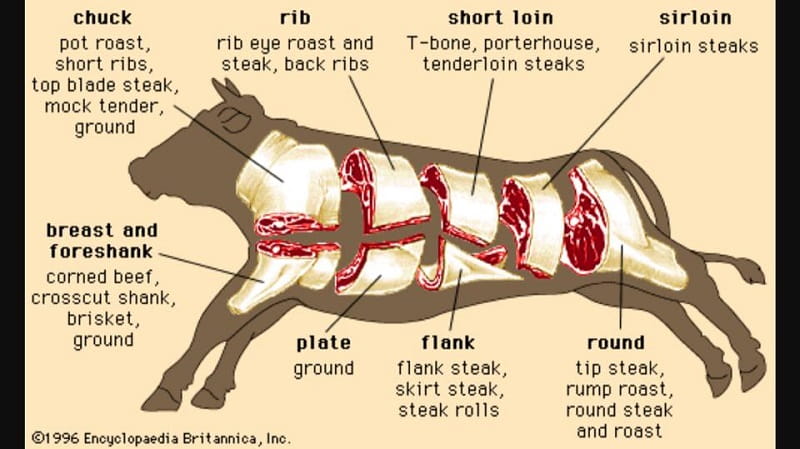
The average weight of a whole cow can vary depending on a number of factors, including breed, age, sex, and environment. Generally speaking, cows can weigh anywhere from 1,000 to 1,800 pounds, with the average weight being around 1,200 to 1,400 pounds. Breeds such as Angus, Hereford, and Brahman tend to be heavier than other breeds.
The average weight of a cow is also affected by its age. Cows can live up to 20 years but typically reach their maximum weight by the age of 3 or 4. Young calves weigh only a few hundred pounds and can gain several hundred pounds annually until they reach adulthood.
The weight of a cow is also affected by its sex. Bulls, on average, weigh more than cows, with the size difference ranging from 20-200 pounds. Bulls tend to have larger heads and shoulders, heavier chests than cows, and larger horns. Bulls also have higher testosterone levels, which helps create more muscle and weight.
Finally, the environment in which a cow lives can influence its weight. Cows raised in barns, with access to feed and hay, tend to be heavier than cows living in pastures where they must forage for food.
How Much Is A Whole Cow?
If you’re looking to purchase a whole cow, you should know a few things about pricing. The cost of a whole cow can vary depending on factors such as weight and processing fees.
On average, a cow may cost around $3,000, but this price can fluctuate. A deposit is usually required when purchasing a whole cow, which can range from $250 to $1,500. The price per pound of beef can also vary, with an average cost of $8.50-$9.50 per pound. The cost of having the animal slaughtered, aged, cut, and wrapped will also add to the overall expense. It’s important to consider these factors when considering purchasing a whole cow for meat.
Read more:
- How Much Does A Half Cow Cost
- How Much Is A Quarter Cow
- How Many Ribeyes In A Cow
- What Part Of The Cow Is Filet Mignon
- What Part Of The Cow Is Ribeye
- What Part Of The Cow Is Brisket
What Are The Most Popular Cuts Of Beef When Buying A Whole Cow?
If you’re looking to purchase a whole cow for butchering and cooking, you’ll want to know what the most popular cuts of beef are to get the most out of your purchase. Knowing which cuts of beef are popular can help you purchase a cow that will provide the most meat and the best value.
The most popular cuts are rib, chuck, loin, and brisket when buying a whole cow. These four cuts cover most of the cow’s body and offer various options for different cooking methods.
The rib is one of the most popular cuts of beef and provides a great flavor when cooked. This cut comes from the rib cage and is usually cut into large steaks or roasts. Ribs are most often used for grilling, roasting, or smoking.
The chuck is another popular cut from the shoulder area between the neck and the rib. It’s often used for ground beef, roasts, and steak. Because the chuck has a lot of connective tissue, it’s best simmered to bring out its full flavor.
The loin is the most tender cut of beef and is usually cut into steaks. It’s usually grilled, pan-fried, or broiled. It’s best-served medium-rare medium and is often used in restaurants and steakhouses.
Finally, the brisket is a cut of beef from the chest area. It’s typically slow-cooked using moist heat and is often used for slow-cooked dishes like stews, pot roasts, or tacos.
These are just a few of the most popular cuts of beef when buying a whole cow. Before you purchase a cow, make sure you know what cuts you’ll be using so you can buy the right one for your needs. This will ensure you maximize your purchase and enjoy your meals with the best possible flavor.
What Factors Affect The Price Of A Whole Cow?
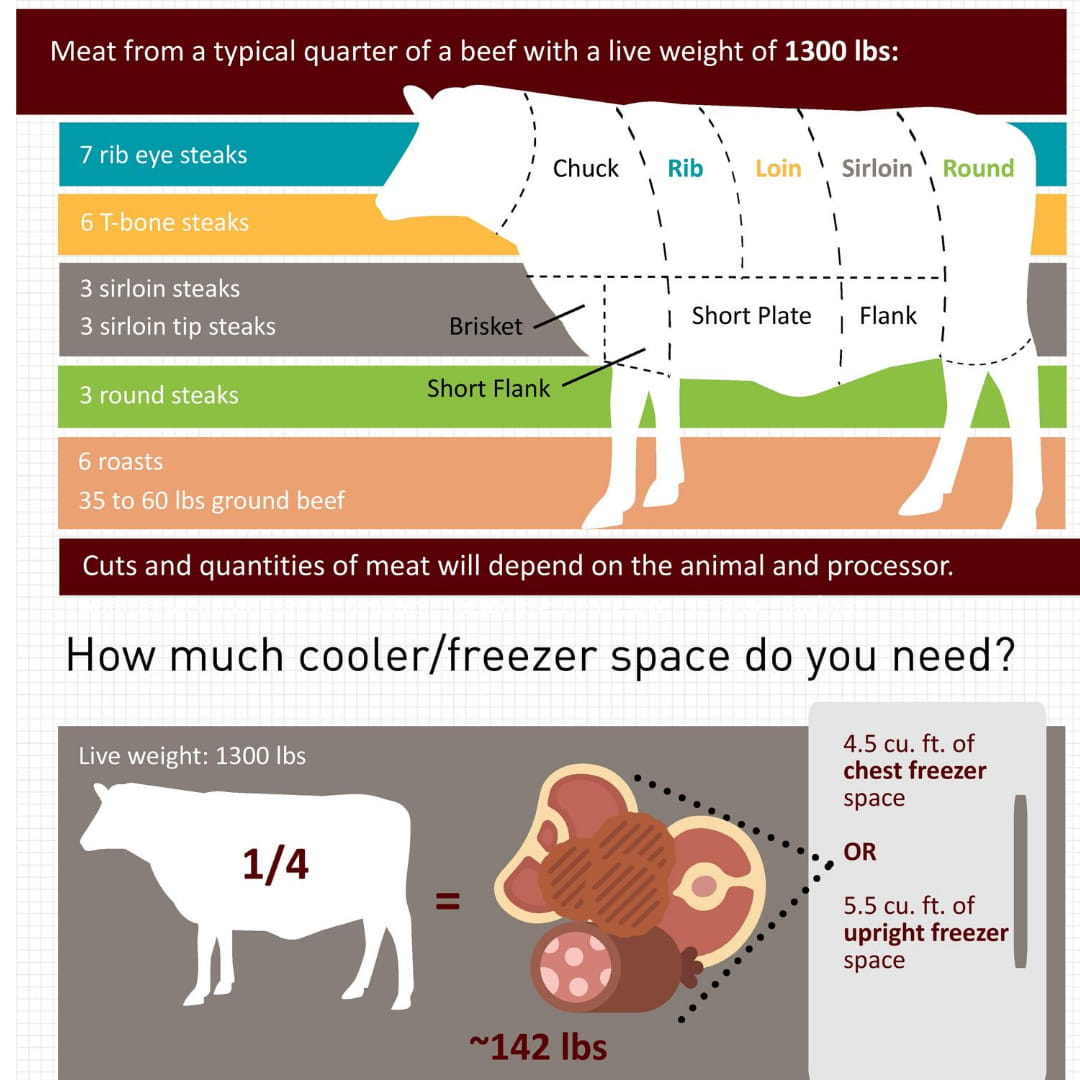
Buying a whole cow is a big decision for any consumer. Not only does it involve a large financial commitment, but it also requires significant planning and effort to ensure the animal is properly cared for. As such, it’s important to understand what factors can affect the price of a whole cow before you commit to the purchase.
First, the breed of cow you purchase can significantly impact the cost. Certain breeds are more expensive due to their rarity or superior meat quality. Additionally, the cow’s age can influence the price, as younger cows are more expensive than older ones.
Location is another important factor in determining the cost of a whole cow. Cows in areas with higher population density will generally be more expensive than cows in more rural areas. This is because feed and other inputs are typically more expensive in urban areas.
The quality of the cow’s care is also a factor. Cows raised in better conditions tend to have more tender meat and a higher value. Cows raised in poor conditions may have tougher meat and a lower value.
Finally, access to a quality butcher can impact the price of a whole cow. Finding a butcher with the experience and expertise necessary to process the cow properly is important to get the best value for your purchase.
How Does The Breed Of The Cow Affect Its Price?
The breed of the cow is, indeed, one of the most important factors determining its price.
There are a number of breeds of cows available in the market, and each has different characteristics that make them unique. The price of a cow is largely dependent on the genetics of the cow and the traits that it has been bred for. Here are a few of the most common breeds of cows and their price ranges:
- Dairy Cows: Dairy cows are bred for their milk-producing abilities. They’re typically more expensive than other breeds, costing anywhere from $2,000 to $10,000.
- Beef Cows: Beef cows are bred for their meat-producing abilities. They’re typically less expensive than dairy cows, ranging in price from $1,900 to $2,300.
- Dual-Purpose Cows: Dual-purpose cows are bred for their milk and meat-producing abilities. They’re priced somewhere in the middle, costing $2,000 to $3,500.
In addition to the breed of the cow, other factors can also affect its price. For example, the cow’s size, age, and health can all play a role in how much you’ll pay for it. A larger, older, healthier cow will typically be more expensive than a smaller, younger, and less-healthy one.
Furthermore, some cows were specifically bred to show animals, and these cows can be sold for much higher prices than their peers. Cows considered higher quality will be priced more highly than those of a lesser grade. Additionally, cows that come from an exclusive line or have a unique trait will be worth more than those that are not.
In addition, the demand for certain breeds of cows can significantly affect the price. If there is a shortage of cows of a particular breed, then the prices of that breed will go up. On the other hand, if there is an abundance of cows of a breed, then the prices of that breed may go down.
Finally, the location of the cow will also affect the price. In some areas, cows may be worth more due to the availability of pasture and the presence of nearby markets. On the other hand, in other areas, cows may be worth less due to a lack of available pasture and a lack of nearby markets.
Can The Age Of The Cow Impact Its Overall Cost?
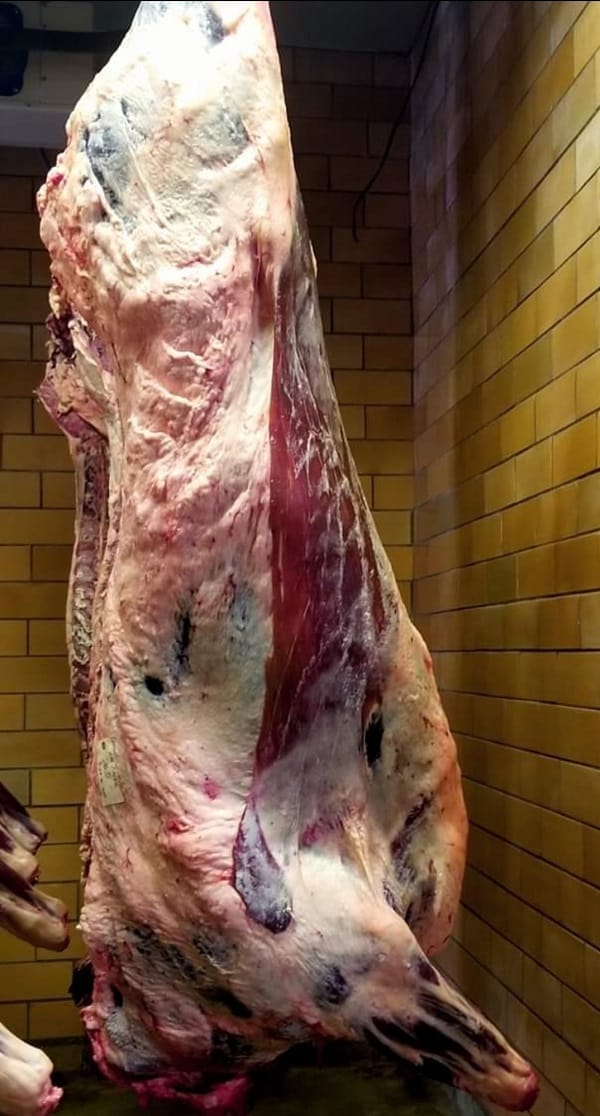
Well, the answer is yes. The age of the cow can affect the overall cost of the cow. The cow’s age can be classified into three stages; calf, yearling, and mature. Each of these stages has its effect on the cost of the cow.
Let’s look at how the cow’s age can impact its overall cost.
- Calf: A calf is a cow younger than one year old. This can be from a few weeks old to a year old. A calf will usually cost less than a mature cow because it doesn’t have the same experience or expertise. This means it will take longer for the calf to reach maturity and become a productive member of the herd.
- Yearling: A yearling is a cow between one and two years old. This cow is past the stage of a calf but is still not fully mature. A yearling is typically more expensive than a calf, as they are closer to being a productive herd member.
- Mature: A mature cow has reached the age of at least three years old. This type of cow has achieved full maturity and is ready to start producing milk and other products. This means that a mature cow will cost more than a calf or a yearling due to its level of expertise and experience.
So, it’s clear that the cow’s age can affect the overall cost. Depending on your specific needs, it’s essential to consider all the factors when deciding on the best cow for your herd.
Is There A Difference In Price Between Grass-Fed And Grain-Fed Beef?
The answer to that question is yes—there is a difference in price between grass-fed and grain-fed beef. Generally speaking, grass-fed beef is more expensive than grain-fed beef. This is because grass-fed beef is more difficult to raise and requires more land and resources. As a result, grass-fed beef tends to be of higher quality and more expensive than grain-fed beef.
But why is grass-fed beef more expensive? First, grass-fed cows are allowed to roam and graze in open fields instead of being confined to feedlots. This means the cows get to eat their natural diet of grass and other plants, giving them a more natural and nutritious diet than grain-fed cows. This also helps reduce their environmental impact, as their manure doesn’t contain the same amount of pollutants as grain-fed cows.
The other factor that makes grass-fed beef more expensive is its production takes longer. Because the cows are allowed to roam and eat their natural diet, they take longer to grow and mature before they’re ready for slaughter. This, combined with the higher quality feed, leads to higher production costs, passed on to the consumer.
Regarding nutrition, grass-fed beef is higher in beneficial fatty acids like Omega-3s and conjugated linoleic acid (CLA). These fatty acids have been linked to a host of health benefits, including lower cholesterol and improved heart health. Grass-fed beef is also a great source of vitamins, minerals, and micronutrients.
Does The Season Affect The Price Of A Whole Cow?
The answer is yes, and understanding how the seasons affect the cost of a whole cow can help you make the most of your purchase.
During the spring, the price of a whole cow tends to be the highest. This is because the cows are at their most productive, as the longer days and warmer temperatures stimulate their feed intake and milk production. As a result, the demand for cows is higher than usual, and so is the price.
In the summer, the price of a cow drops as the cows become less active. As the weather becomes hotter and the days shorter, cows’ feed intake and milk production decrease, and their demand decreases. With lower demand comes lower prices.
In the fall, the price of a whole cow tends to be the lowest. This is because the cows are at their lowest productivity, and demand is low. The shorter days and cooler temperatures also affect the cows’ feed intake and milk production, meaning the price of a cow is lower than during the spring and summer.
The winter can also affect the price of a cow, but it depends on the weather conditions in your region. If the winter is mild, then the prices may stay around the same as in the fall. However, if the winter is cold, the prices may go up due to decreased activity and feed intake.
What Additional Costs Come With Purchasing A Whole Cow, Such As Processing Fees?
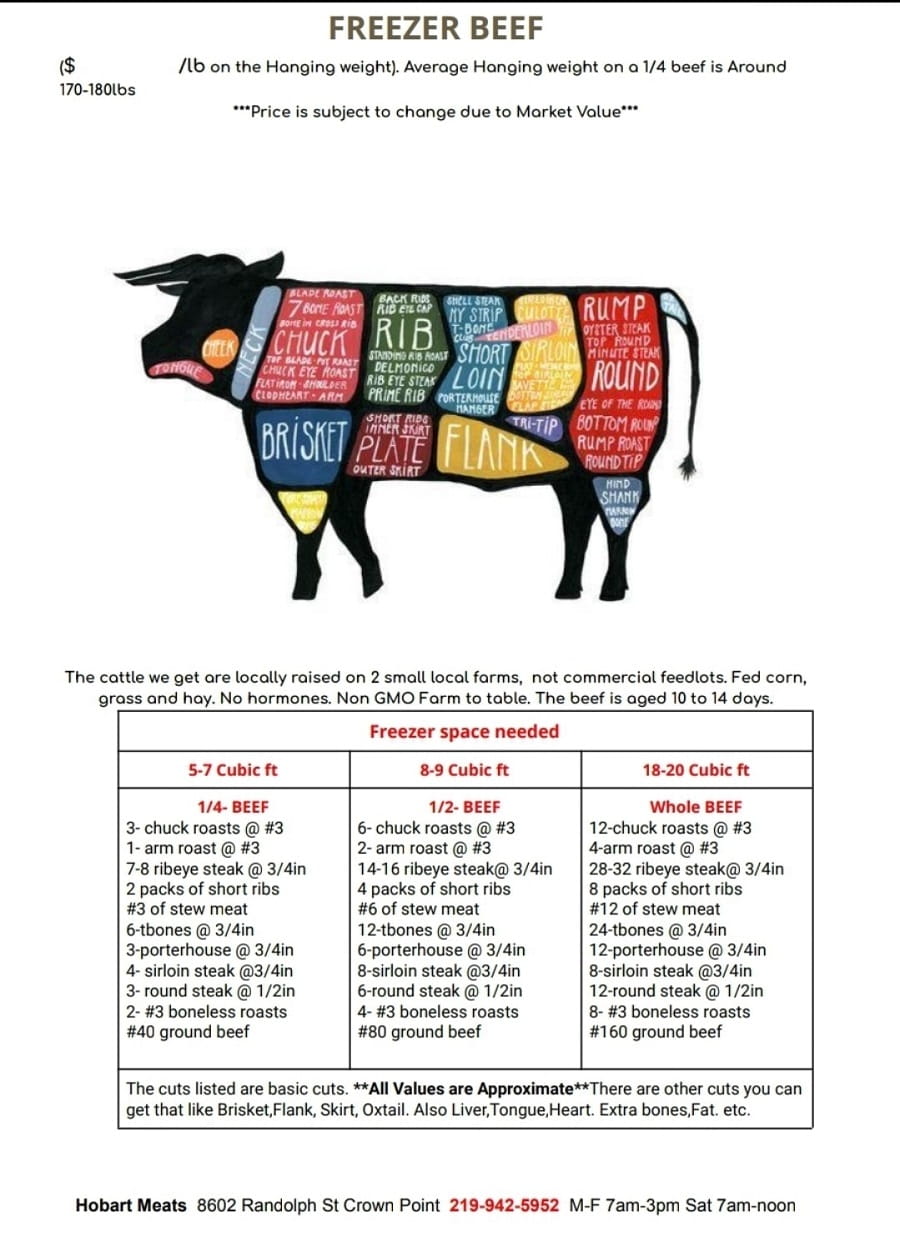
When purchasing a whole cow, many additional costs come along with it, such as processing fees. These fees can add up quickly, so it’s important to understand what you’re getting into before purchasing.
First and foremost, you’ll need to factor in the cost of the cow itself. Cows can range in price from hundreds to thousands of dollars, depending on the breed and quality of the animal. You’ll also need to factor in the cost of transporting the cow, which can range from a few hundred to a few thousand, depending on the distance and complexity of the journey.
Once you’ve got the cow, you’ll need to begin thinking about processing fees. These are the costs associated with butchering and packaging the cow, including the price of a butcher, meat-cutting tools, and packaging materials. Depending on the size of the cow, and the complexity of the work, these costs can range from a few hundred to a few thousand dollars.
Additionally, you may encounter additional costs such as vaccination fees, medicine, and feed. Vaccination fees are usually required by law to ensure the cow is healthy, and medicine is often necessary to prevent certain diseases. Feed is necessary to keep the cow in good condition, and the cost of this will depend on what type of feed you buy and how much you need.
Finally, when you purchase a whole cow, you may also have to pay a fee for having the cow slaughtered or shipping the carcass or other parts of the animal to a processing plant. Again, this cost can vary depending on the size and complexity of the animal and the distance it needs to travel.
Common Misconceptions About Buying A Whole Cow
There are many misconceptions about buying a whole cow. Many people mistakenly believe that buying a whole cow is expensive and complicated, while others think it is only for farmers. But the truth is that buying a whole cow can be an affordable and simple process for anyone. Here are some of the most common misconceptions about buying a whole cow.
Misconception #1: Buying a Whole Cow is Too Expensive
The first common misconception about buying a whole cow is that it is too expensive. In reality, buying a whole cow is quite affordable. The cost of a whole cow will vary depending on the type of cow and the quality of the beef, but it can often be found for an affordable price. Additionally, when you purchase a whole cow, you get a large amount of meat, meaning you will have plenty of leftovers for many meals. This makes buying a whole cow a great value.
Misconception #2: Buying a Whole Cow is Complicated
Another common misconception about buying a whole cow is that it is complicated. In reality, buying a whole cow is quite simple. All you need to do is contact a local farmer or butcher and arrange for the purchase of the cow. The farmer or butcher will be able to provide you with all the necessary information and advice you need to make the purchase.
Misconception #3: Buying a Whole Cow is Only For Farmers
The third common misconception about buying a whole cow is that it is only for farmers. This is not true. Anyone can purchase a whole cow, regardless of whether they are a farmer. The most important thing is to research and find a reputable farmer or butcher to buy the cow from.
Misconception #4: Buying a Whole Cow is Difficult to Transport
The fourth common misconception about buying a whole cow is that it is difficult to transport. This is not necessarily the case. Depending on the size of the cow, it may be possible to transport it yourself, or you can hire a trucking company to do the job for you.
In conclusion, dispelling these common misconceptions about buying a whole cow is essential. Buying a whole cow can be an affordable and simple process for anyone. You only need to research and find a reputable farmer or butcher to purchase the cow from. With the right information, you can enjoy all the benefits of buying a whole cow. In conclusion, dispelling these common misconceptions about buying a whole cow is important. Buying a whole cow can be an affordable and simple process for anyone. You only need to research and find a reputable farmer or butcher to purchase the cow from. With the right information, you can enjoy all the benefits of buying a whole cow.
How Do You Properly Store And Freeze A Large Meat Amount From A Whole Cow?
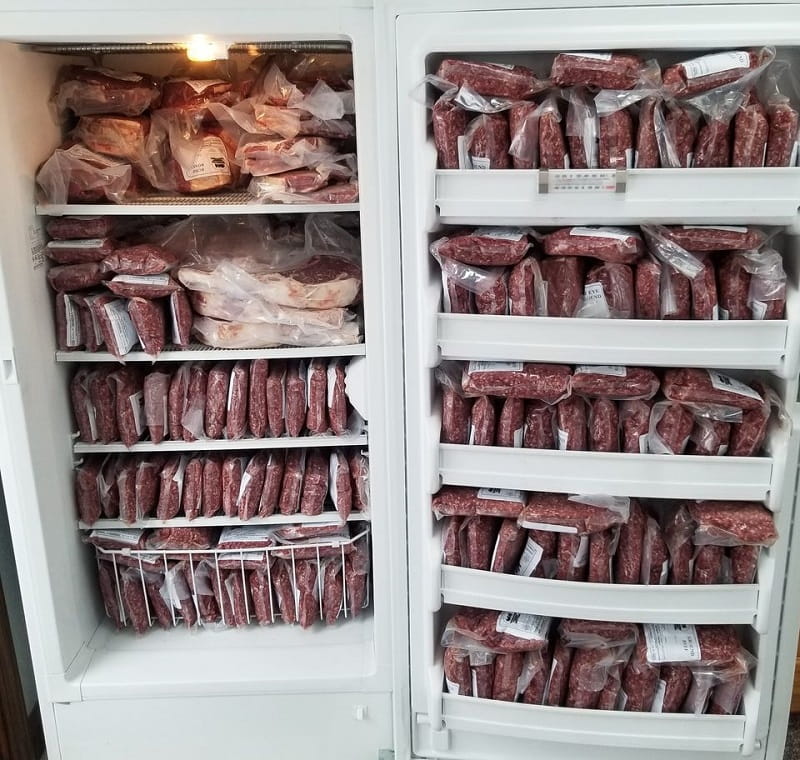
Storing and freezing a large amount of meat from a whole cow is daunting for most homeowners. But it can be done successfully with some planning and the right tools. Whether you’re looking to save some money by buying in bulk or a hunter who needs to store an entire animal, here’s how to properly store and freeze a large amount of meat from a whole cow.
1. Start by dividing the cow into cuts. Start by taking an inventory of the cow’s cuts. Ensure you know what cuts you’ll need to store and freeze. This will help you plan the storage process properly. You can either do this yourself or hire a butcher to do it for you.
2. Find the right containers for storing the meat. The right containers can make all the difference when storing and freezing a large amount of meat. Choose large enough containers to fit the cuts of meat you’re storing. Choose freezer-safe containers that are airtight and water-resistant.
3. Separate the cuts by type. Separate the cuts by types, such as steaks, roasts, and ground beef. This will make it easier to keep the meat organized and ensure it doesn’t get mixed up.
4. Store the meat in separate bags. Place the cuts into separate freezer bags and label them accordingly. Make sure to use the appropriate type of bag for the cut. For example, steaks should be stored in a vacuum-sealed bag, while ground beef should be stored in a high-quality Ziploc bag.
5. Freeze the meat properly. Place the bags of meat into the freezer, standing up. Ensure the meat is stored in the coldest part of the freezer. For optimal results, use a chest freezer, as this will help keep the temperature more consistent.
6. Monitor the temperature. Make sure to check the temperature of the freezer periodically to make sure it’s staying below 0°F. If the temperature rises, move the meat to another part of the freezer or transfer it to another freezer.
Finally, make sure to use the meat within a few months. Frozen meat can last up to a year in the freezer, but it’s best to consume it as soon as possible.
What Is The Best Way To Find A Reputable Source For Purchasing A Whole Cow?
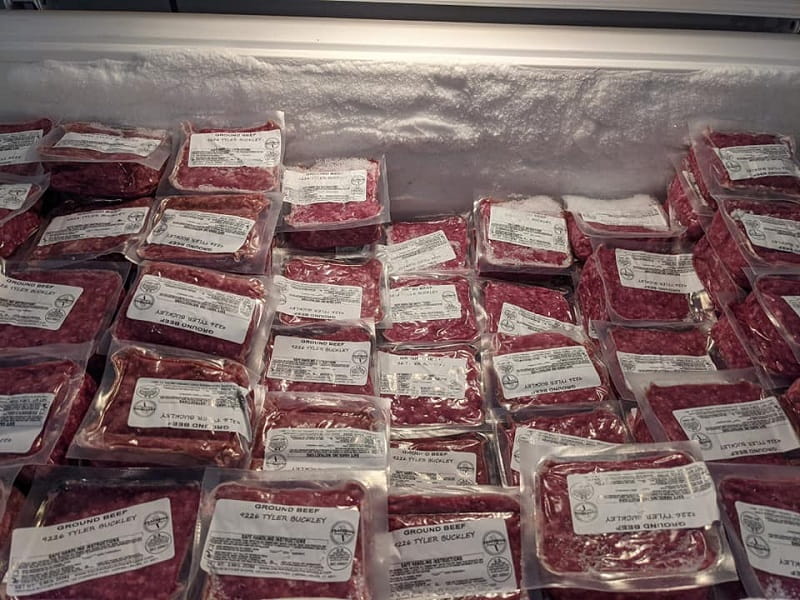
Purchasing a whole cow is a big decision, and you must find the best source for your needs. A few different options are available when buying a cow, so let’s look at each of them.
First, you can purchase a cow directly from a local farm. This can be the best option if you want to be sure that the cow is of high quality and that the farmer takes good care of their livestock. However, finding a local farm that offers cows for sale can be difficult, especially if you’re not familiar with the area.
Another option is to purchase a cow from an online source. There are a variety of online sources that offer cows for sale, including auction sites and large-scale online retailers. You can often find great deals on cows online, but it is important to ensure that the seller is reputable and that the cow is of good quality. You should also ensure the cow is vaccinated correctly and the seller has a good reputation.
Finally, you can also purchase a cow from a local livestock market. Livestock markets are a great place to find a variety of cows, and you can often find good deals. However, it is important to ensure that the cow is of good quality and that the seller is reputable. Additionally, it would help if you asked questions about the care and feeding of the cow to ensure it will live a long and healthy life.
FAQs About How Much Is A Whole Cow
Can You Save Money Buying A Whole Cow Versus Purchasing Individual Meat Cuts?
Buying a whole or half cow can save money in the long run compared to purchasing individual cuts of meat. A whole or half cow is comparable when breaking down the hanging weight and finished cuts price per pound. However, a quarter cow may not be as cost-effective due to the costs of having individual meat cuts available.
By purchasing a whole or half cow, a consumer can save over $500 compared to buying individual cuts. This also gives them more control over each cut of meat, allowing them to access otherwise expensive cuts like the tongue or beef knuckle. Consumers can save even more money by being their own butcher and grinding or cutting their own pastured or grass-fed meat.
At approximately $5.45/pound for all cuts of grass-fed beef, purchasing from a farm like Clover Meadows Beef can save significantly compared to the $7.03/pound at Walmart. It’s time to embrace buying in bulk and take advantage of the savings!
What Is The Difference In Cost Between A Cow Raised For Meat And A Dairy Cow?
It’s interesting to note that dairy and beef cows have different costs associated with raising them. Dairy cows are bred to produce a large quantity of milk, far beyond the needs of their calves. Beef cows, on the other hand, only produce enough milk for their young. As a result, the cost of raising a dairy cow tends to be higher than that of a beef cow.
Additionally, the cost of feed, replacement heifers, and cull cows can significantly impact the overall cost of raising cows for milk or meat. Farmers must carefully consider these factors when deciding which type of cow to raise. While dairy and beef cows are valuable in their way, it’s important to understand the differences in cost associated with each.
Conclusion
To conclude, determining the price of a whole cow can be difficult. It depends on various factors, such as the size, age, and breed of the cow and the location where the cow is being purchased. Generally, a whole cow can range in price from around $3,000 depending on the abovementioned factors. Researching and comparing prices before purchasing a cow is essential to ensure you’re getting the best deal possible.
It’s also a good idea to ask questions and look for discounts or additional fees that could affect the price. Ultimately, the answer to the question “How much is a whole cow?” is not simple, but with the right information and research, you can find the perfect cow for your needs at a price that fits your budget.
References:
- https://www.nbc4i.com/news/is-buying-a-whole-cow-worth-it-a-guide-to-buying-freezer-beef/
- https://www.mamanatural.com/save-money-real-food-meat/

Hey readers! Chip Holland here, and I’m a Manager of this website. My passion for writing about it only matches my passion for BBQ. Follow my blog for mouth-watering recipes, tips, and tricks for the perfect smoke, grill, and BBQ. I’m sure you won’t be disappointed!
